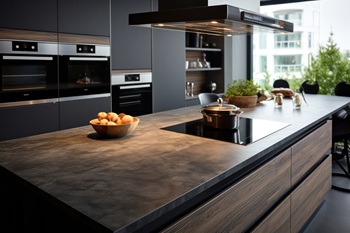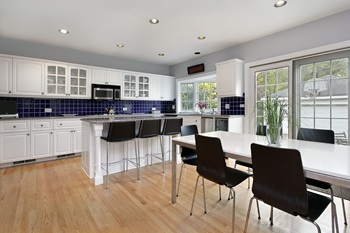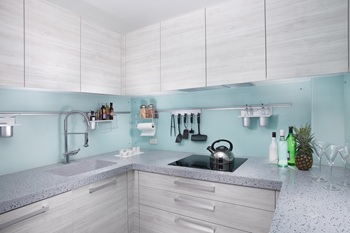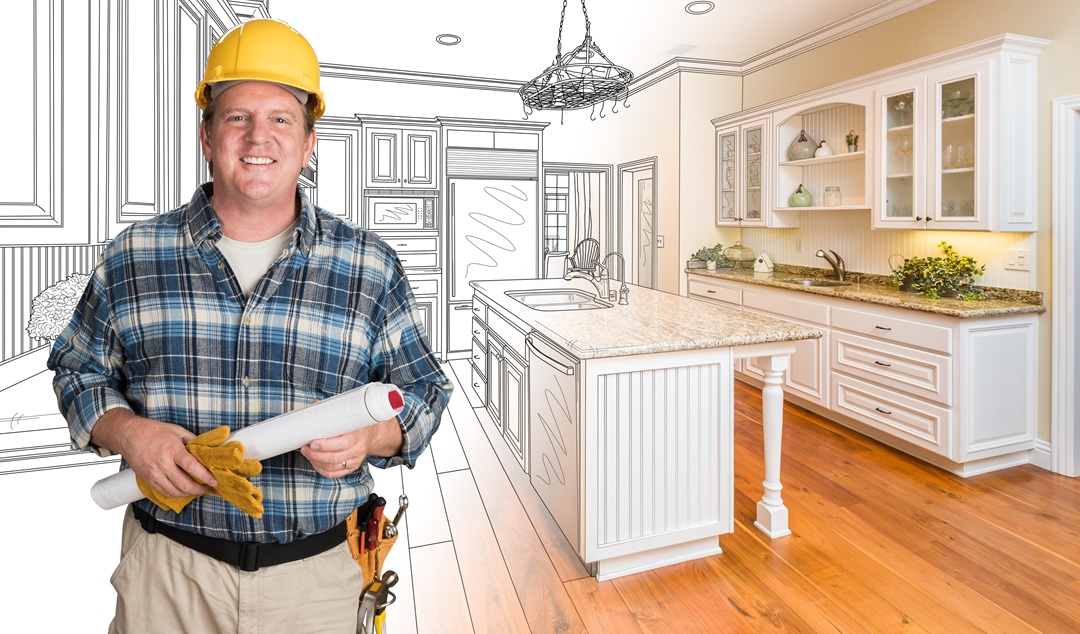How to renovate a sustainable kitchen
A kitchen isn’t just a place for cooking; it’s the heart of a home. It’s where family stories are shared over meals and where creativity unfolds in the form of recipes. But as much as we love our kitchens, they’re also one of the most resource-heavy spaces in the house — consuming energy, water, and materials on a daily basis. If you’re planning a remodel, taking the sustainable route is one of the most innovative and most rewarding choices you can make.
A sustainable kitchen renovation doesn’t mean sacrificing style or comfort. Instead, it’s about making thoughtful choices, from the materials you pick to the appliances you fit, so your space looks stunning, works efficiently, and helps support a greener environment.
Let’s explore how to design and renovate a sustainable kitchen that’s eco-friendly, modern, and timeless.
Understanding What a Sustainable Kitchen Really Means
Before exploring colours, benchtops, or cabinetry, it's helpful to know what "sustainability" actually refers to in the kitchen design context. A sustainable kitchen seeks to lower its impact on the environment while enhancing your home's efficiency. This entails a focus on renewable materials, durable products, and energy-efficient systems that reduce waste long-term.
It’s about asking:
- Where do my materials come from?
- How long will they last?
- Can they be recycled or reused later?
- How much energy and water will my kitchen consume?
The answers to these questions shape every decision you make — from floor to ceiling. The result is not just a stylish space, but one that respects the planet too.
Start with a Solid Design Plan
All excellent renovations begin with a plan, and sustainability needs to be part of yours from the start. Think through how you use your kitchen — do you cook daily, entertain dinner guests, or need additional storage for bulk foods? Planning for your lifestyle enables you to design an efficient and functional space that reduces future renovation requirements.
By deliberately arranging your design, you not only enhance functionality, but also avoid useless construction material — a basic principle of green remodeling.
Choose Eco-Friendly Cabinetry
Cabinetry forms the foundation of your kitchen’s design, but it’s also one of the most significant environmental considerations. Choosing right materials and finishes can make a big difference. Select recycled wood, renewable wood, bamboo, or FSC-certified wood for cabinets. Do not purchase those with excessive formaldehyde or VOC (volatile organic compound) levels as they emit poisonous gases in your indoor air.
If you're based in Victoria and want something more bespoke and eco-friendly, consider investing in custom kitchen cabinets that Melbourne homeowners love for their handcrafted aspect and green philosophy. Having cabinetry handcrafted gives you the power to select the type of materials and finishes used, wherein they're not only durable but also eco-friendly.
You can even reuse parts of your old cabinets if they’re in good condition. Refinishing, repainting, or replacing only the doors and handles can give your kitchen a new look without sending tonnes of material to landfill.
Pick Sustainable Materials for Surfaces and Flooring
The materials you choose for benchtops, splashbacks, and flooring have a massive impact on both aesthetics and sustainability. Look for options that are renewable, recycled, or responsibly sourced.
Benchtops:
Recycled stone, composite quartz with eco-binders, or reclaimed timber are excellent choices. They’re stylish, long-lasting, and carry a much lower environmental footprint than synthetic alternatives.


Flooring:
All of these three materials are long-lasting, recyclable, and sustainable. Cork is particularly great for the kitchen because it's soft to walk on, naturally antimicrobial, and water-resistant.
Splashbacks:
Glass or stainless steel splashbacks not only provide a contemporary finish but are recyclable and easy to clean, making them environmentally friendly and hygienic.

Energy Efficiency: The Heart of a Sustainable Kitchen
Most of the environmental footprint of a kitchen comes from energy usage. Appliances, lighting, and hot water all contribute considerably to adding your home energy bills. By selecting energy-efficient models, you’ll save money and reduce emissions.
Always check the energy rating labels before purchasing appliances. The more stars, the more efficient the appliance. For ovens, dishwashers, and fridges, this can make a noticeable difference in long-term running costs.
Induction cooktops are another excellent investment. They use electromagnetic technology to heat cookware directly, which makes them faster and more efficient than gas or traditional electric stoves. Pair that with LED lighting and motion sensors, and you’ll see immediate energy savings.
If you’re installing new cabinetry, talk to kitchen cabinet makers Melbourne homeowners trust for their ability to integrate energy-efficient layouts. They can design storage that maximises airflow around appliances and provides proper spacing for ventilation — small details that help your kitchen run more efficiently.
Reduce, Reuse, and Recycle
Renovating sustainably isn’t only about what you add — it’s also about what you keep and how you dispose of the rest. Instead of tearing everything down, identify elements that can be reused or upcycled.
Maybe your old benchtop can become a laundry work surface, or your existing tiles can be reused in a garden or garage project. Even leftover timber can be repurposed into shelving or cutting boards.
When it comes to demolition waste, look for recycling programs or donation centres that accept cabinetry, fixtures, or appliances in working condition. Many charities and second-hand stores will happily collect these items for resale or reuse, reducing landfill waste.
Additionally, installing a proper recycling system within your new kitchen can make day-to-day sustainability effortless. Add individual bins for recyclables, compost, and regular trash. A well-planned pull-out system keeps everything tidy and pleasantly out of sight.
Water Efficiency Matters
Installing water-saving fixtures and fittings is an easy way of making a big impact.
Look for taps with a high WELS (Water Efficiency Labelling Scheme) rating, which use significantly less water per minute. Pair this with a dishwasher that has a high water-efficiency rating — newer models can clean a full load using as little as nine litres of water.
You can also consider installing an under-sink water filter system to reduce bottled water use, helping to cut down on plastic waste. For households with gardens, connecting a greywater recycling system to your sink is another eco-friendly step.
Sustainable Lighting Choices
Lighting plays both a functional and emotional role in your kitchen. From task lighting above the benchtop to ambient lighting for evening dinners, the right setup can completely transform your space. But it should also be efficient.
Switching to LED bulbs is one of the simplest and most affordable ways to save energy. LEDs use up to 80% less electricity than traditional incandescent bulbs and last much longer.
When possible, make natural light the hero. Use light-coloured surfaces, mirrors, or reflective splashbacks to bounce daylight throughout the space. Dimmers and intelligent lighting controls also allow you to adjust brightness based on the time of day, helping reduce unnecessary energy use.
Partnering with experienced kitchen cabinet manufacturers can help you incorporate lighting directly into cabinetry designs. Under-cabinet LEDs, for instance, are both practical and efficient — providing focused light for cooking tasks without the need for extra overhead fixtures.
Go for Non-Toxic Paints and Finishes
A freshly painted kitchen smells wonderful — but many paints and finishes release VOCs that can be harmful to both health and the environment. Choosing low-VOC or zero-VOC paints ensures your indoor air stays cleaner and safer for your family.
These eco-friendly paints come in a wide range of colours and finishes, so you won’t have to sacrifice style. The same applies to sealants and varnishes for your cabinetry, benchtops, and flooring. Non-toxic finishes maintain durability while minimising harmful emissions.
Composting and Waste Management Systems
Kitchens generate a lot of organic waste, from vegetable scraps to coffee grounds. Setting up a composting system keeps this waste out of landfills, where it would otherwise produce methane — a powerful greenhouse gas.
You can opt for a benchtop compost bin or an integrated system that fits seamlessly under the sink. Composting not only benefits the environment but also gives you nutrient-rich soil if you have a garden.
Combining this with proper waste segregation (for paper, plastic, and glass) makes it easier to live sustainably without much daily effort.
Support Local and Ethical Suppliers
Where you buy your materials and who you hire matters just as much as what you choose. Supporting local suppliers reduces transportation emissions and strengthens the community economy.
Melbourne, for example, has a growing network of artisans and tradespeople who prioritise sustainability in their craft. From eco-conscious designers to local timber suppliers, choosing local helps cut down the carbon footprint of your renovation project.
Before purchasing, ask about sourcing, manufacturing practices, and environmental certifications. These conversations not only make you an informed buyer but also encourage more businesses to adopt sustainable practices.
Incorporate Smart Technology
Technology has made it easier than ever to manage a sustainable kitchen. Smart appliances and home systems can optimise energy and water use automatically.
For instance, intelligent refrigerators monitor food freshness to prevent you from wastage, and smart plugs can switch off power to unused appliances. Bright lighting and heating controls ensure energy savings even when you are not present.
These small adjustments can make a surprisingly significant impact in the long term, saving both dollars and resources.
Finishing Touch
Sustainability extends to the finishing details, too. Choose decor made from natural fibres like cotton or linen, and avoid synthetic textiles that shed microplastics.
Indoor plants purify the air and also bring a refreshing natural element to your kitchen design. Consider herbs like basil or mint in small pots on your windowsill — they’re practical, sustainable, and beautiful.
Even something as simple as switching to reusable dish cloths and biodegradable cleaning products contributes to a greener lifestyle.
Final Thoughts
By choosing responsible materials, energy-efficient systems, and local craftsmanship, you can create a space that truly gives back.
Every sustainable choice — from the benchtop to the light switch — matters.
It's all about making headway, not hitting a home run. Even the small things add up in the long run, and before you know it, you'll have a kitchen that's as pretty as it is green.
So, whether you’re just starting your renovation or fine-tuning the final details, remember: the best kitchens are built with heart — and respect for the environment.











